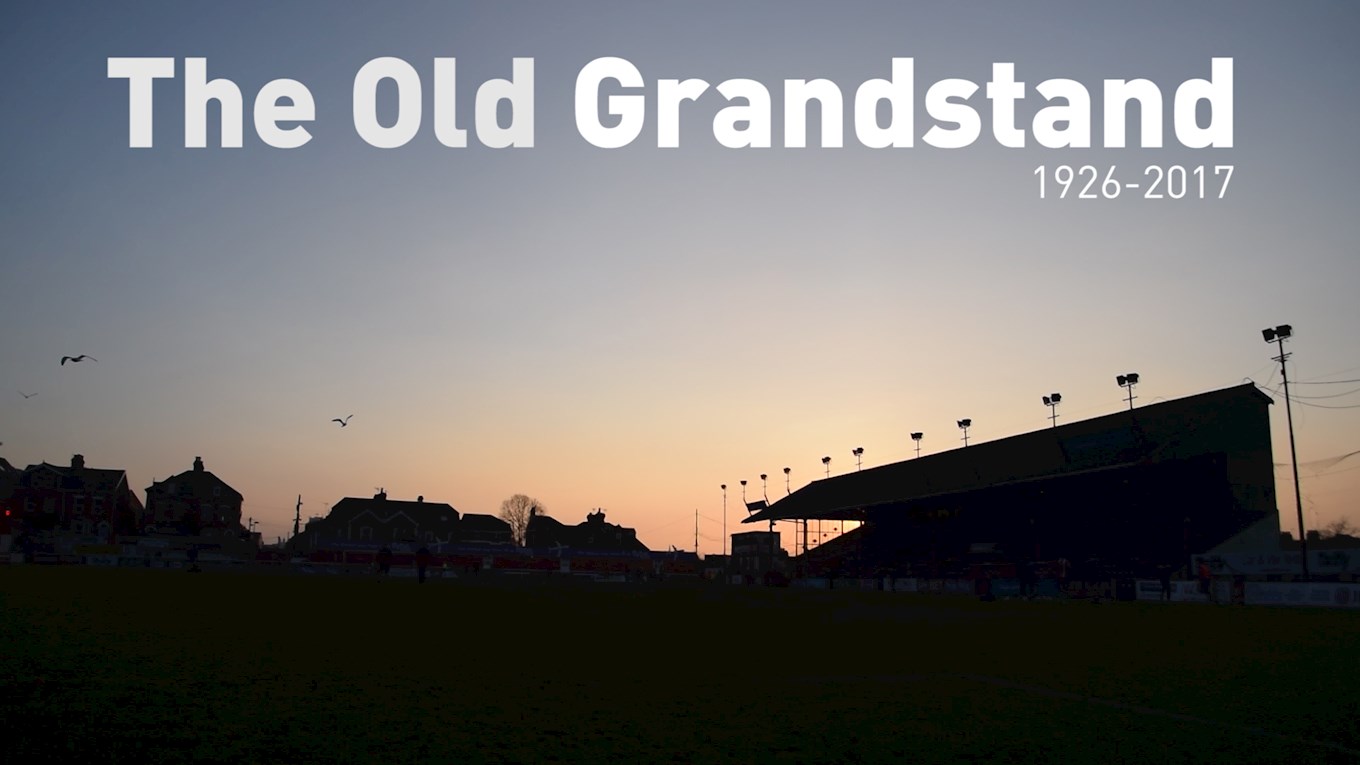In the UK, 1926 is often remembered for the general strike, the first public demonstration of a television by John Logie Baird, the inaugural British Grand Prix, and the births of David Attenborough and Eric Morecambe.
In Exeter, you can’t look much further than the re-birth of the Old Grandstand. In 1925 a devastating fire, which could be seen and felt as far away as the High Street, completely destroyed the stand and everything inside, including the players’ kits.
It is thought that the blaze was caused by playing kits catching alight, after being put to dry around a stove following that morning’s practice. Miraculously no one was seriously injured, and after the fire players had to change before matches in a Sidwell Street pub, before walking to the ground in their replacement kits.
As a result of the disaster, the club and its fans rallied to raise funds in order to redevelop this section of the ground, as well as to turn the popular stand on the other side of the pitch into the famous ‘Cowshed’. In fact the fundraising appeal was so successful that there was even money left over to make improvements to the Duke Bank (Thatchers’ Big Bank).
The (new) Old Grandstand was built over the following spring/summer, despite issues caused by the general strike, with work being conducted by ‘Messrs’ Humphrey & Co. The stand cost approximately £8,000, half of which was raised by the club, with the other half generated through bonds via a public appeal. To put this into context, the ground was originally purchased from the proceeds of the sale of Dick Pym to Bolton for £5000, a world record at the time.
The first match to take place in a ‘well-filled’ stand was the opening match of the 1926/27 season, a 3-0 win over Merthyr on August 28. The team that played that day was: Bailey; Pollard, Charlton; Ditchburn, Pool, Garrett; Purcell, McDevitt, Blackmore, Walker, Compton.
The stand is a nod to football grounds of the past, and one for the purists. A mainly wooden structure with corrugated iron and a sloping roof, which houses old-fashioned floodlights that stand tall and proud.
Stagecoach South West took corporate sponsorship of the Old Grandstand over a decade ago, rebranding the stand as the Stagecoach Family Stand, which created a space for families to enjoy matches at St James Park in a safe, friendly environment.
Stagecoach kindly continue their sponsorship of the stand throughout its redevelopment, and their brand will take pride of place on the hoardings erected in front of the stand.
In 2017, we say farewell to an old friend. A grandstand that oozed character and told many stories. A stand that has held generations of City fans. A stand that has witnessed the highs and the lows of Exeter City over the past 90 years.
It is fitting that the Stagecoach Family Stand bowed out in style with the play-off semi-final second leg against Carlisle United on May 18, 2017. The Grandstands final piece of action was to witness Jack Stacey’s stunning 95th-minute winner that sent the Grecians to Wembley, and the packed stands crowd into raptures for one last time.
In June, supporters were able to own a piece of history by purchasing seats from the stand, and many of these have ended up as memorial pieces in fans gardens, and in stands at local football clubs, supporting future generations of fans.
A painting is available showing a view of the Old Grandstand as seen from the Big Bank, produced by renowned stadium portrait artist Paul Town it is your chance to keep a memory of the stand.
If you have memories, or photographs you would like to share, please send them in to: media@exetercityfc.co.uk.
Sleep tight Old Grandstand, it’s been a pleasure.

